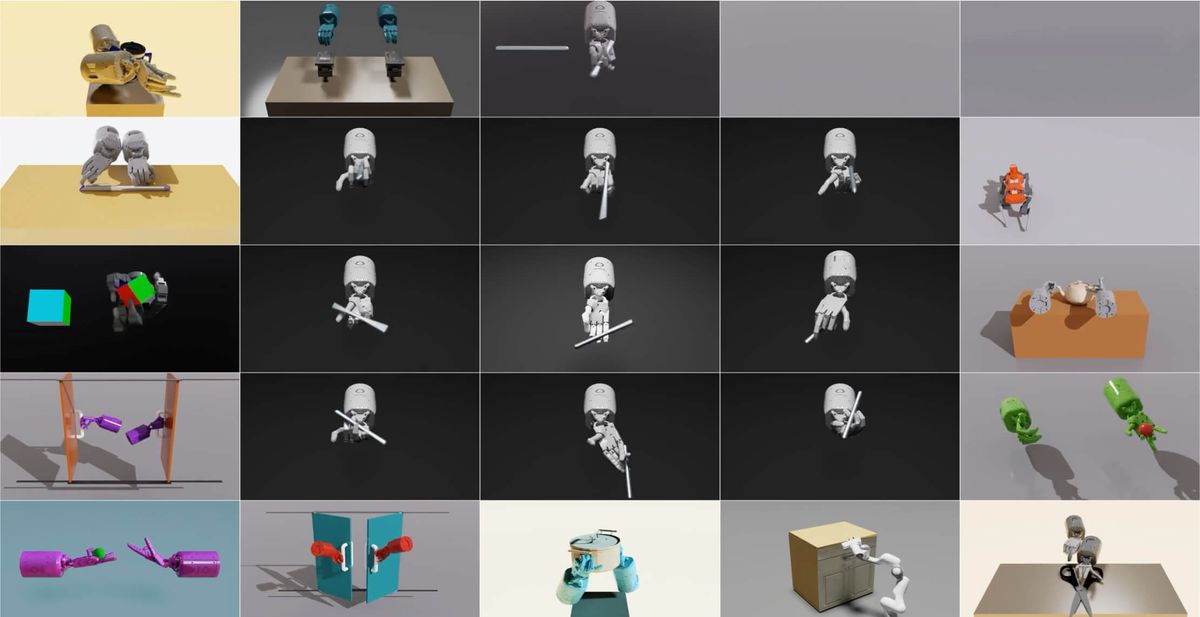
NVIDIA Research recently unveiled Eureka, a new AI agent that can automatically generate algorithms to train robots to perform complex manual tasks. This breakthrough technology combines large language models like GPT-4 with reinforcement learning to allow robots to rapidly acquire new skills.
As described in NVIDIA's announcement and research paper published this week, Eureka works by leveraging GPT-4's natural language capabilities. The system takes the code of a robotic simulation environment as input context. It then uses this to generate reward functions - the algorithms that enable trial-and-error robot learning through positive reinforcement of desired behaviors.
Crucially, Eureka does this without any human prompting or pre-defined templates. The AI agent is fully autonomous in formulating reward algorithms tailored to the task and robot morphology. Anima Anandkumar, NVIDIA's senior director of AI research and one of the contributors to the Eureka paper, highlighted the prevailing obstacles, stating that reward design, often, is predominantly a "trial-and-error process."
The symbiosis of Eureka and NVIDIA's Isaac Gym – a robust physics simulation platform – aids in the swift assessment of reward candidates' quality. As a result, training becomes substantially more efficient. Subsequent to this evaluation, Eureka formulates a summary of pivotal training metrics, guiding the LLM to enhance its reward function generation. This cycle ensures that the AI continuously evolves, improving its efficiency and effectiveness.
Linxi "Jim" Fan, an integral contributor to the project, described Eureka as an ingenious blend of "large language models and NVIDIA GPU-accelerated simulation technologies." He further projected that Eureka would not only enable intricate robot control but would also revolutionize the creation of physically realistic animations for artists.
In tests across 29 distinct environments with 10 different robot platforms, Eureka consistently produced superior reward programs compared to human experts. On over 80% of tasks, the AI-generated rewards led to over 50% better task performance on average.
NVIDIA provides video demonstrations of Eureka teaching a robotic hand to expertly spin a pen at rapid speeds - on par with human performance. This is a particularly impressive feat requiring complex motor control. The AI has also imparted skills like opening drawers, ball throwing, and scissor handling to various robot designs.
Eureka represents a big step forward for utilizing large language models in robotic control. By closing the gap between high-level planning and low-level motor manipulation, the system expands possibilities for efficiently training robots.
It also signifies a milestone for NVIDIA Research, joining Voyager – another AI agent built with GPT-4 that can autonomously navigate the world of Minecraft. As NVIDIA continues its foray into expanding the horizons of AI and robotics, Eureka stands as a testament to the organization's commitment to reshaping the future of robotic learning.
NVIDIA is open-sourcing Eureka's code and benchmarks. This will allow developers to build on the research using tools like the Isaac Gym physics simulator. More intelligent robot learning could soon find its way into industrial and consumer applications.
With inventive applications of AI like Eureka, NVIDIA continues spearheading innovation in robotics and beyond. Eureka provides developers an intriguing new option for imbuing next-gen robots with advanced capabilities.

